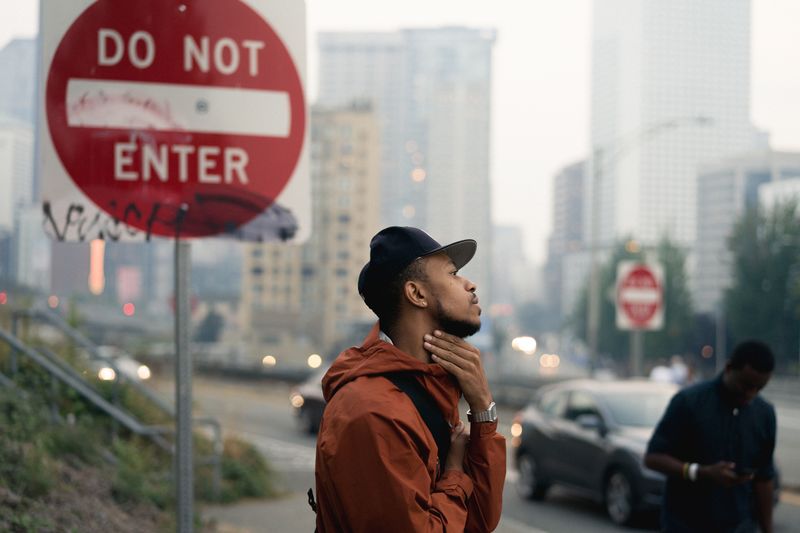The Buzz on Street Photographers
The Buzz on Street Photographers
Blog Article
The Basic Principles Of Street Photographers
Table of ContentsStreet Photographers Things To Know Before You Get ThisThe Best Guide To Street PhotographersEverything about Street PhotographersThe 5-Minute Rule for Street PhotographersThe Only Guide to Street Photographers
A category of digital photography that records everyday life in a public place. The very publicness of the setting makes it possible for the photographer to take honest images of strangers, often without their knowledge. Road digital photographers do not always have a social objective in mind, however they favor to separate and catch moments which could otherwise go undetected (Street Photographers).Though he was affected by numerous of those that influenced the street professional photographers of the 1950s and '60s, he was not chiefly curious about recording the spirit of the street. The impulse to visually document individuals in public began with 19th-century painters such as Edgar Degas, douard Manet, and Henri de Toulouse-Lautrec, who worked side by side with professional photographers trying to capture the essence of urban life.
In comparison to Atget, digital photographer Charles Marville was hired by the city of Paris to create an encyclopaedic document of Haussmann's metropolitan planning job as it unravelled, hence old and brand-new Paris. While the professional photographers' topic was essentially the exact same, the outcomes were markedly different, showing the impact of the professional photographer's intent on the character of the images he created.
Offered the fine high quality of his photos and the breadth of material, designers and musicians usually bought Atget's prints to use as reference for their very own job, though business interests were barely his primary motivation. Instead, he was driven to picture every last residue of the Paris he loved.
Facts About Street Photographers Revealed
They expose the city through his eyes. His job and basic understanding of photography as an art type worked as inspiration to generations of photographers that complied with. The next generation of street digital photographers, though they likely did not refer to themselves as such, was introduced by the photojournalism of Hungarian-born digital photographer Andr Kertsz.
Unlike his peers, Brassa made use of a larger-format Voigtlnder video camera with a longer direct exposure time, forcing him to be extra calculated and thoughtful in his technique than he may have been if using a Leica. (It is believed that he might not have had the ability to pay for a Leica at that time, however he did, however, make use of one in the late 1950s to take colour photos.) Brassa's pictures of the Paris underworld lit up by synthetic light were a discovery, and the compilation of the series that he published, (1933 ), was a significant success.
Cartier-Bresson was a champ of the Leica video camera and among the very first digital photographers to maximize its abilities. The Leica permitted the professional photographer to connect with the surroundings and to catch minutes as they took place. Its fairly little dimension additionally aided the professional photographer discolor into the background, which was Cartier-Bresson's favored technique.
Facts About Street Photographers Revealed
It is due to this basic understanding of the art of image taking that he is often credited with discovering the tool around once again approximately a century because its creation. He took pictures for more than a half century and influenced generations of photographers to trust their eye and instinct in the moment.
These are the questions my sources I will try to answer: And afterwards I'll leave you with my very own meaning of road photography. Yes, we do. Allow's begin with defining what a definition is: According to (Street Photographers) it is: "The act of specifying, or of making something definite, distinctive, or clear"
No, most definitely not. The term is both limiting and misinforming. Sounds like a street digital photography ought to be pictures of a streets appropriate?! And all road professional photographers, with the exception of a handful of outright novices, will fully value that a road is not the key part to street digital photography, and in fact if it's an image of a road with perhaps a few uninteresting people doing absolutely nothing of passion, that's not road digital photography that's a picture of a street.
The 6-Second Trick For Street Photographers
He makes a valid factor do not you believe? While I agree with him I'm not sure "candid public digital photography" will certainly capture on (although I do kind of like the term "candid photography") since "road digital photography" has actually been around for a lengthy time, with several masters' names attached to it, so I think the term is right here to remain (Street Photographers).
You can shoot at the beach, at a festival, in an alley, in a park, in a piazza, in a coffee shop, at a gallery or art gallery, in a metro terminal, at an occasion, on a bridge, under a bridge ...
Yes, I'm afraid we scared no choice! Without policies we can not have an interpretation, and without a meaning we do not have a style, and without a genre we don't have anything to define what we do, and so we are stuck in a "guidelines interpretation genre" my sources loophole!
The Basic Principles Of Street Photographers

Report this page